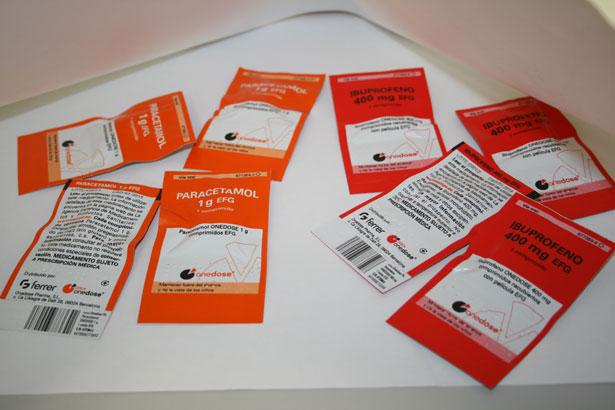|
Suppository
A suppository is a dosage form used to deliver pharmaceutical drug, medications by insertion into a body orifice (any opening in the body), where it dissolves or melts to exert local or systemic effects. There are three types of suppositories, each to insert into a different sections: rectal suppositories into the rectal administration, rectum, vaginal suppositories into the Intravaginal administration, vagina, and urethral suppositories into the Urethra#Male, urethra of a male. Suppositories are ideal for infants, elderly individuals and post-operative patients, who are unable to swallow oral medications, and for individuals experiencing severe nausea and/or vomiting. Suppositories are administered through rectal route to reduce onset time of reaction. Composition Several different ingredients can be used to form the base of a suppository: cocoa butter or a similar substitute, polyethylene glycol, Gel#Hydrogels, hydrogels, and glycerinated gelatin. The type of material used depen ... [...More Info...] [...Related Items...] OR: [Wikipedia] [Google] [Baidu] |
Pessary
A pessary is a prosthetic device inserted into the Human vagina, vagina for structural and pharmaceutical purposes. It is most commonly used to treat Stress incontinence, stress urinary incontinence to stop urinary leakage and to treat pelvic organ prolapse to maintain the location of organs in the pelvic region. It can also be used to administer medications locally in the vagina or as a method of contraception. Pessaries come in different shapes and sizes, so it is important that individuals be fitted for them by health care professionals to avoid any complications. However, there are a few instances and circumstances that allow pessaries to be purchased without a prescription or without seeking help from a health care professional. Some side effects may occur if pessaries are not sized properly or regularly maintained, but with the appropriate care, pessaries are generally safe and well tolerated. History Early use of pessaries dates back to the ancient Egyptians, as they d ... [...More Info...] [...Related Items...] OR: [Wikipedia] [Google] [Baidu] |
Laxatives
Laxatives, purgatives, or aperients are substances that loosen human feces, stools and increase defecation, bowel movements. They are used to treat and prevent constipation. Laxatives vary as to how they work and the side effects they may have. Certain stimulant, lubricant, and saline water, saline laxatives are used to evacuate the Colon (anatomy), colon for rectum, rectal and bowel examinations, and may be supplemented by enemas under certain circumstances. Sufficiently high doses of laxatives may cause diarrhea. Some laxatives combine more than one active ingredient, and may be administered Oral administration, orally or Rectum#Route of administration, rectally. Types Bulk-forming agents Bulk-forming laxatives, also known as roughage, are substances, such as dietary fiber, fiber in food and hydrophilic agents in over-the-counter drugs, that add bulk and water to human feces, stools so they can pass more easily through the intestines (lower part of the digestive tract). Prope ... [...More Info...] [...Related Items...] OR: [Wikipedia] [Google] [Baidu] |
Rectal Administration
Rectal administration (colloquially known as boofing or plugging) uses the rectum as a route of administration for medication and other fluids, which are absorbed by the rectum's blood vessels,The rectum has numerous blood vessels available to absorb drugs: upwards 2/3rds of the dose bypasses first-pass metabolism through systemic distribution and the rest is taken through the liver and metabolized via the hepatic portal system. and flow into the body's circulatory system, which distributes the drug to the body's organs and bodily systems.The organs and systems include, depending on if the drug is able to pass the blood–brain barrier (BBB) or not, the central nervous system (CNS), peripheral nervous system (PNS), cardiovascular system (CVS), et cetera. Uses Medical uses In addition to pharmacological effects, rectal administration has some properties which can be advantageous for the use in medicine. Rectal administration can allow patients to remain in the home setting ... [...More Info...] [...Related Items...] OR: [Wikipedia] [Google] [Baidu] |
Rectal Stricture
A rectal stricture (rectal stenosis) is a chronic and abnormal narrowing or constriction of the lumen of the rectum which presents a partial or complete obstruction to the movement of bowel contents. A rectal stricture is located deeper inside the body compared to an anal stricture. Sometimes other terms with wider meaning are used, such as ''anorectal stricture'', ''colorectal stricture'' or ''rectosigmoid stricture''. Definition Rectal stricture has been defined as the inability to pass a rigid proctoscope (12 mm diameter) or a rigid sigmoidoscope (19 mm diameter) through the affected cross-section of rectum. If the rectal stricture is accessible during digital rectal examination, a rectal stricture may be defined as narrowing to less than one-finger breadth.Ahmad, A; Krishnamurthy, P (June 2021).Benign Rectal Strictures: A Review Article. ''Practical Gastroenterology.'' 45 (6): 16-33. Anal stricture versus rectal stricture Anal strictures are usually located at th ... [...More Info...] [...Related Items...] OR: [Wikipedia] [Google] [Baidu] |
Dosage Form
Dosage forms (also called unit doses) are pharmaceutical drug products presented in a specific form for use. They contain a mixture of active ingredients and inactive components ( excipients), configured in a particular way (such as a capsule shell) and apportioned into a specific dose. For example, two products may both be amoxicillin, but one may come in 500 mg capsules, while another may be in 250 mg chewable tablets. The term unit dose can also refer to non-reusable packaging, particularly when each drug product is individually packaged. However, the FDA differentiates this by referring to it as ''unit-dose "packaging" or "dispensing"''. Depending on the context, ''multi(ple) unit dose'' may refer to multiple distinct drug products ''packaged'' together or a ''single'' product containing multiple drugs and/or doses. Formulations The term dosage form may also sometimes refer only to the pharmaceutical formulation of a drug product's constituent substances, witho ... [...More Info...] [...Related Items...] OR: [Wikipedia] [Google] [Baidu] |
Erectile Dysfunction
Erectile dysfunction (ED), also referred to as impotence, is a form of sexual dysfunction in males characterized by the persistent or recurring inability to achieve or maintain a Human penis, penile erection with sufficient rigidity and duration for satisfactory sexual activity. It is the most common sexual problem in males and can cause psychological distress due to its impact on self-image and sexual relationships. The majority of ED cases are attributed to physical risk factors and predictive factors. These factors can be categorized as vascular, neurological, local penile, hormonal, and drug-induced. Notable predictors of ED include aging, cardiovascular disease, diabetes mellitus, Hypertension, high blood pressure, obesity, Dyslipidemia, abnormal lipid levels in the blood, hypogonadism, smoking, Depression (mood), depression, and Adverse drug reactions, medication use. Approximately 10% of cases are linked to psychosocial factors, encompassing conditions such as depressio ... [...More Info...] [...Related Items...] OR: [Wikipedia] [Google] [Baidu] |
Drugs Acting On The Gastrointestinal System And Metabolism
A drug is any chemical substance other than a nutrient or an essential dietary ingredient, which, when administered to a living organism, produces a biological effect. Consumption of drugs can be via inhalation, injection, smoking, ingestion, absorption via a patch on the skin, suppository, or dissolution under the tongue. In pharmacology, a drug is a chemical substance, typically of known structure, which, when administered to a living organism, produces a biological effect. A pharmaceutical drug, also called a medication or medicine, is a chemical substance used to treat, cure, prevent, or diagnose a disease or to promote well-being. Traditionally drugs were obtained through extraction from medicinal plants, but more recently also by organic synthesis. Pharmaceutical drugs may be used for a limited duration, or on a regular basis for chronic disorders. Classification Pharmaceutical drugs are often classified into drug classes—groups of related drugs that have sim ... [...More Info...] [...Related Items...] OR: [Wikipedia] [Google] [Baidu] |
Dosage Forms
Dosage forms (also called unit doses) are medication, pharmaceutical drug products presented in a specific form for use. They contain a mixture of active ingredients and inactive components (excipients), configured in a particular way (such as a capsule (pharmacy), capsule shell) and apportioned into a specific dose (biochemistry), dose. For example, two products may both be amoxicillin, but one may come in 500 mg capsules, while another may be in 250 mg chewable tablets. The term unit dose can also refer to non-reusable packaging, particularly when each drug product is individually packaged. However, the FDA differentiates this by referring to it as ''unit-dose "packaging" or "dispensing"''. Depending on the context, ''multi(ple) unit dose'' may refer to multiple distinct drug products ''packaged'' together or a ''single'' product containing multiple drugs and/or doses. Formulations The term dosage form may also sometimes refer only to the pharmaceutical formulation ... [...More Info...] [...Related Items...] OR: [Wikipedia] [Google] [Baidu] |
Constipation
Constipation is a bowel dysfunction that makes bowel movements infrequent or hard to pass. The Human feces, stool is often hard and dry. Other symptoms may include abdominal pain, bloating, and feeling as if one has not completely passed the bowel movement. Complications from constipation may include hemorrhoids, anal fissure or fecal impaction. The normal frequency of bowel movements in adults is between three per day and three per week. Babies often have three to four bowel movements per day while young children typically have two to three per day. Constipation has many causes. Common causes include slow movement of stool within the colon, irritable bowel syndrome, and pelvic floor disorders. Underlying associated diseases include hypothyroidism, diabetes, Parkinson's disease, celiac disease, non-celiac gluten sensitivity, Vitamin B12 deficiency, vitamin B12 deficiency, colon cancer, diverticulitis, and inflammatory bowel disease. Medications associated with constipation in ... [...More Info...] [...Related Items...] OR: [Wikipedia] [Google] [Baidu] |
Anus
In mammals, invertebrates and most fish, the anus (: anuses or ani; from Latin, 'ring' or 'circle') is the external body orifice at the ''exit'' end of the digestive tract (bowel), i.e. the opposite end from the mouth. Its function is to facilitate the defecation, expulsion of wastes that remain after digestion. Bowel contents that pass through the anus include the gaseous flatus and the semi-solid feces, which (depending on the type of animal) include: indigestible matter such as bones, hair pellet (ornithology), pellets, endozoochory, endozoochorous seeds and gastrolith, digestive rocks; Summary at residual food material after the digestible nutrients have been extracted, for example cellulose or lignin; ingested matter which would be toxic if it remained in the digestive tract; excretion, excreted metabolites like bilirubin-containing bile; and dead mucosal epithelia or excess gut bacteria and other endosymbionts. Passage of feces through the anus is typically controlled by ... [...More Info...] [...Related Items...] OR: [Wikipedia] [Google] [Baidu] |
Enema
An enema, also known as a clyster, is the rectal administration of a fluid by injection into the Large intestine, lower bowel via the anus.Cullingworth, ''A Manual of Nursing, Medical and Surgical'':155 The word ''enema'' can also refer to the liquid injected, as well as to a device for administering such an injection. In standard medicine, the most frequent uses of enemas are to relieve constipation and for bowel cleansing before a medical examination or procedure; also, they are employed as a lower gastrointestinal series (also called a barium enema), to treat Travelers' diarrhea, traveler's diarrhea, as a vehicle for the administration of food, water or medicine, as a stimulant to the general system, as a local application and, more rarely, as a means of reducing body temperature, as treatment for encopresis, and as a form of Management of dehydration, rehydration therapy (proctoclysis) in patients for whom intravenous therapy is not applicable. Medical usage The princip ... [...More Info...] [...Related Items...] OR: [Wikipedia] [Google] [Baidu] |









